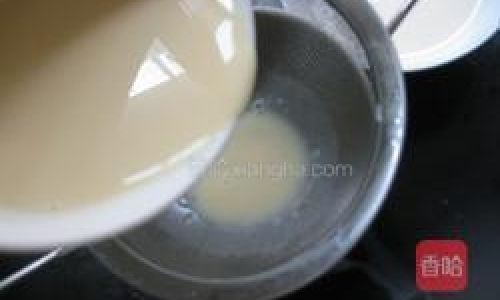Roasted sesame dressing, with its rich, nutty flavor and creamy texture, has become a staple in salads, sushi bowls, and Asian-inspired dishes. Loved for its ability to elevate even the simplest meals, this dressing’s popularity has soared in recent years. However, as health-conscious consumers increasingly scrutinize food labels, questions about its calorie content and nutritional value have emerged. This article delves into the caloric composition of roasted sesame dressing, explores its nutritional profile, and offers practical tips for enjoying it mindfully.
What Is Roasted Sesame Dressing?
Roasted sesame dressing, often labeled as “sesame ginger dressing” or “toasted sesame vinaigrette,” is a condiment primarily made from sesame seeds, oil, soy sauce, vinegar, sugar, and aromatic seasonings like garlic and ginger. The seeds are typically toasted to enhance their natural nutty flavor before being blended with other ingredients to create a thick, emulsified sauce. While variations exist across brands and recipes, the core components remain consistent: sesame seeds and oil contribute to its signature taste and texture.

Calorie Content: Breaking Down the Numbers
The calorie content of roasted sesame dressing varies depending on the recipe and serving size. On average, a two-tablespoon (30-milliliter) serving contains 120–150 calories. This range is influenced by factors such as the ratio of sesame oil to other ingredients, added sugars, and the presence of thickening agents like mayonnaise or tahini.
To put this into perspective, a single tablespoon of roasted sesame dressing packs roughly 60–75 calories. For comparison, a tablespoon of balsamic vinaigrette contains about 40–50 calories, while a tablespoon of ranch dressing clocks in at 70–90 calories. While roasted sesame dressing falls mid-range in calorie density, its creamy consistency and bold flavor often lead people to use larger servings, inadvertently increasing calorie intake.
Where Do the Calories Come From?
The majority of calories in roasted sesame dressing derive from three sources:
- Sesame Oil: High in monounsaturated and polyunsaturated fats, sesame oil is calorie-dense, providing 120 calories per tablespoon.
- Sesame Seeds: Toasted seeds add crunch and depth, contributing healthy fats, fiber, and protein. However, they also add calories—approximately 50 calories per tablespoon.
- Added Sugars and Sweeteners: Many commercial varieties include sugar, honey, or syrups to balance the dressing’s tartness. A teaspoon of sugar adds 16 calories, which can accumulate quickly.
Nutritional Pros and Cons
While roasted sesame dressing is calorie-dense, it offers nutritional benefits that warrant attention:
- Healthy Fats: Sesame oil and seeds are rich in unsaturated fats, which support heart health and brain function.
- Antioxidants: Sesame seeds contain lignans like sesamin and sesamolin, which have antioxidant and anti-inflammatory properties.
- Minerals: A single serving provides small amounts of calcium, iron, magnesium, and zinc.
However, there are drawbacks:
- High in Sodium: Many store-bought versions contain excessive salt, with some brands packing 200–300 milligrams per serving (up to 13% of the recommended daily intake).
- Added Sugars: Excess sugar can spike blood glucose levels and contribute to weight gain if consumed in excess.
- Calorie Density: Frequent over-pouring can lead to unintended calorie surplus, hindering weight management goals.
How to Enjoy Roasted Sesame Dressing Without Guilt
- Portion Control: Measure servings using a tablespoon to avoid mindless overuse. Pair it with low-calorie bases like leafy greens, cucumbers, or grilled chicken to balance the meal.
- Dilute It: Mix the dressing with water, rice vinegar, or citrus juice to stretch its volume while preserving flavor.
- Make It at Home: Create a lighter version by reducing oil and sugar. For example:
- Ingredients: ¼ cup toasted sesame seeds, 2 tablespoons olive oil, 1 tablespoon rice vinegar, 1 teaspoon honey, 1 garlic clove, and a pinch of salt.
- Blend until smooth, adjusting consistency with water. This homemade option cuts calories by 30–40% compared to store-bought alternatives.
- Use It as a Marinade: Instead of drizzling it over salads, marinate proteins or tofu in a small amount to infuse flavor without excess calories.
Comparing Roasted Sesame Dressing to Other Condiments
| Condiment | Calories per Tbsp | Fat (g) | Carbs (g) | Sugar (g) | Sodium (mg) |
|---|---|---|---|---|---|
| Roasted Sesame | 60–75 | 6–7 | 1–2 | 1–2 | 150–250 |
| Balsamic Vinaigrette | 40–50 | 3–4 | 2–3 | 1–2 | 100–200 |
| Ranch | 70–90 | 7–8 | 1–2 | 1 | 150–300 |
| Caesar | 80–100 | 8–9 | 1 | 5 | 200–350 |
This table highlights that while roasted sesame dressing is not the lowest-calorie option, it competes favorably with creamier alternatives like ranch and Caesar.
Health Implications: Should You Worry?
For most individuals, moderate consumption of roasted sesame dressing fits into a balanced diet. However, those monitoring sodium or sugar intake should check labels carefully. Opt for low-sodium or sugar-free varieties, or prioritize homemade versions.

If weight loss is a goal, consider the dressing’s calorie density. A single tablespoon may seem insignificant, but over a week, daily use could add 500–700 extra calories—equivalent to an extra meal.
The Role of Roasted Sesame Dressing in Cultural Cuisines
In Japanese and Chinese cuisine, sesame-based sauces like goma-ae (sesame dressing) and jiang you (sesame paste) are traditional. These dishes often pair the dressing with steamed vegetables or cold noodles, balancing richness with fresh ingredients. Adopting similar practices—using dressing as a flavor accent rather than a meal’s foundation—can help mitigate calorie concerns.
Frequently Asked Questions
Q: How many calories are in a typical restaurant serving of roasted sesame dressing?
A: Restaurants often serve 2–3 tablespoons per dish, totaling 120–225 calories. Ask for it on the side to control portions.
Q: Is roasted sesame dressing healthier than mayonnaise?
A: Yes. While both are calorie-dense, roasted sesame dressing contains healthier fats and fewer saturated fats than mayonnaise.
Q: Can I freeze roasted sesame dressing to extend its shelf life?
A: Freezing is not recommended, as oil-based dressings may separate or become grainy when thawed. Store in the refrigerator for up to two weeks.
Conclusion: Balance and Mindfulness Are Key
Roasted sesame dressing is a culinary delight that need not be banished from healthy diets. By understanding its calorie content, practicing portion control, and opting for lighter variations, you can savor its flavor without compromising nutritional goals. Whether drizzled over a vibrant salad or used to marinate grilled vegetables, this dressing proves that mindful indulgence can coexist with wellness. As with all condiments, moderation and awareness are the secrets to enjoying it guilt-free.





0 comments